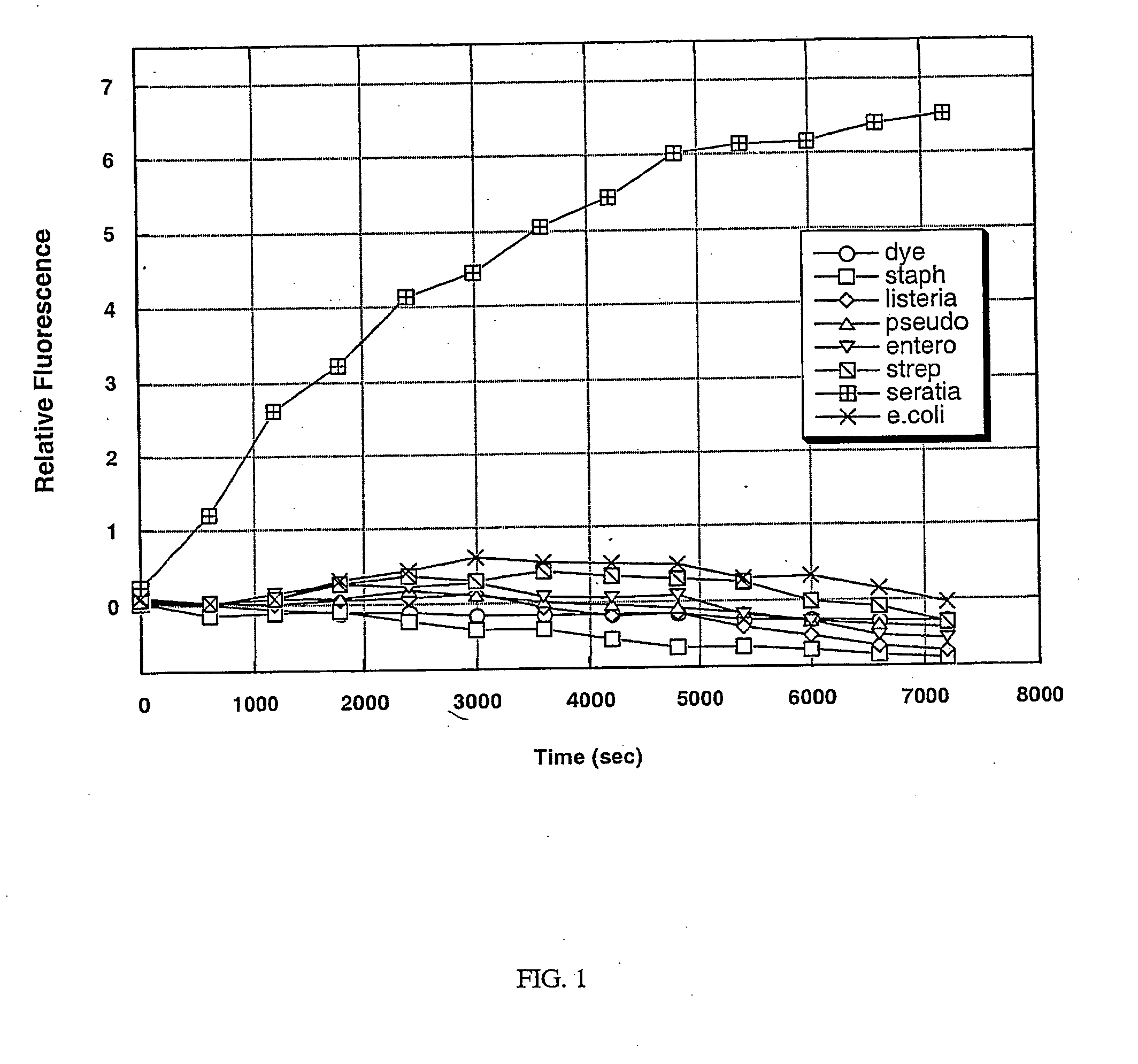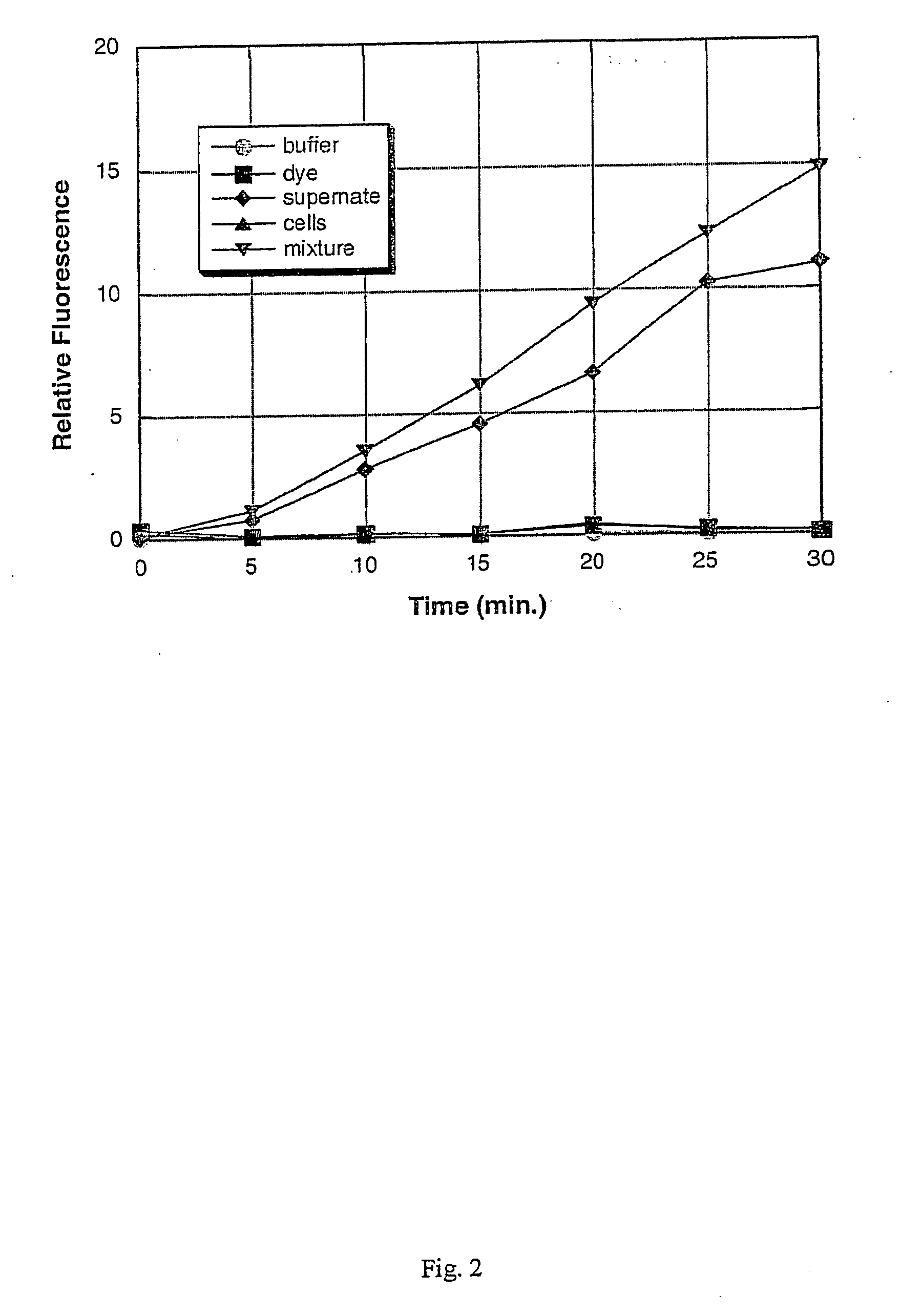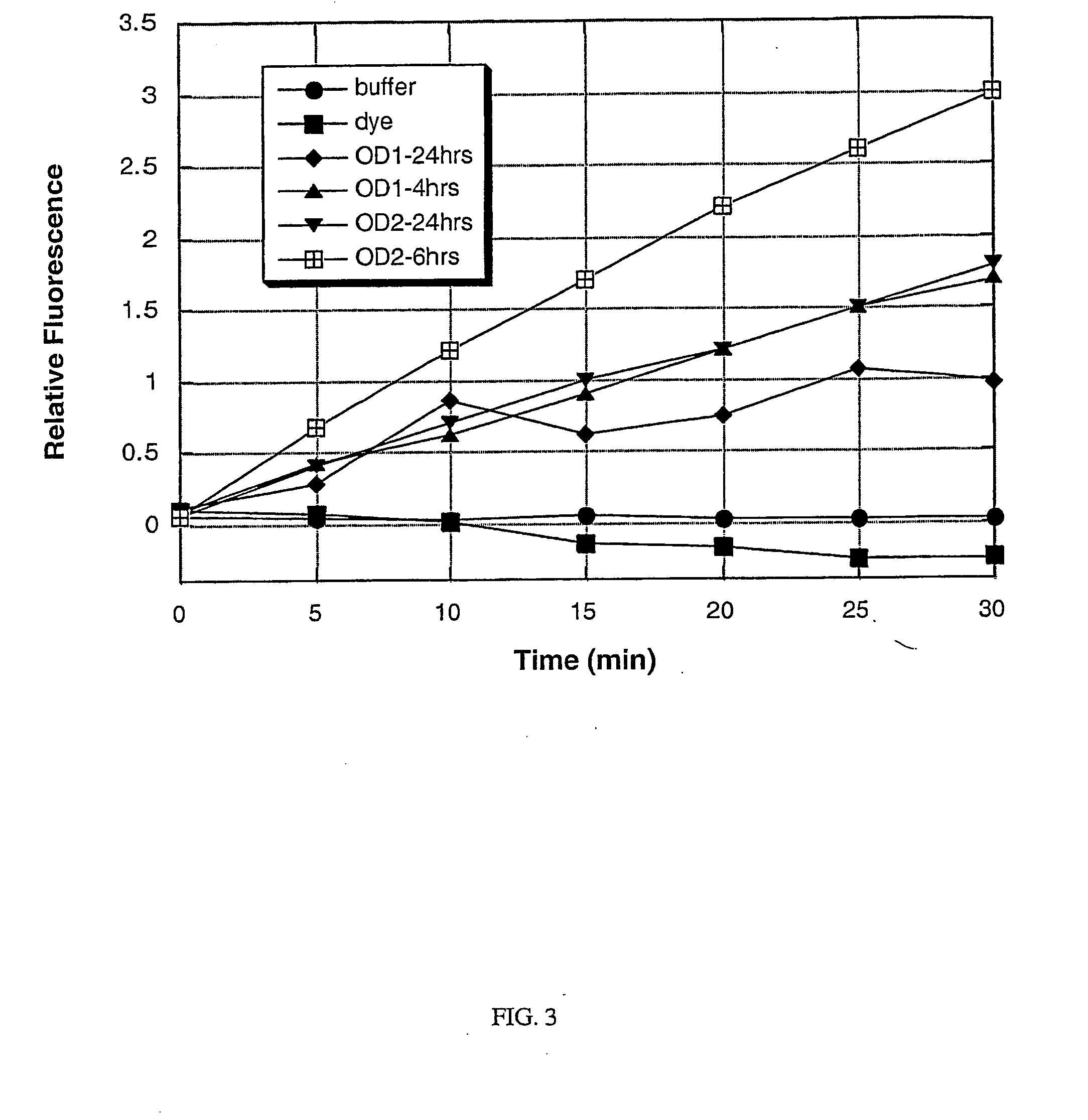Method for detecting microorganisms
a microorganism and detection method technology, applied in the field of detection methods, can solve the problems of unintended effect of breeding resistant strains of bacteria, many symptoms only evident, and severe, even life-threatening infections
- Summary
- Abstract
- Description
- Claims
- Application Information
AI Technical Summary
Benefits of technology
Problems solved by technology
Method used
Image
Examples
example 1
Identification of Wound-Specific Proteins
[0090] The TIGR comprehensive microbial resource multi genomic analysis tools located at the following Internet site: http: / / www.tigr.org / tigr-scripts / CMR2 / select_genomes.spl?showref=true&reforg=0&cutoff=60&logic=AND&showheader=true, as available on Jun. 18, 2001 were used to analyze the complete genome sequences of the following common wound pathogen species: Staphylococcus aureus (S. aureus), Staphylococcus epidermidis, Streptococcus pyogenes, Pseudomonas aeruginosa, Enterococcus faecalis, and Escherichia coli. Specifically, each gene in the S. aureus genome was compared for homologs in each of the other above specified genomes. Any S. aureus gene that did not have a homolog (with at least 45% identity at the amino acid level) to all 5 pathogens, was discarded. The remaining pool contained only those genes that are common to these six major wound pathogens. These searches were conducted using the default settings as parameters.
[0091] To i...
example 2
Preparation of Bacteria for Detection of the Absence or Presence of Bacteria in a Sample
[0102] A culture of each of the following bacterial species was grown to saturation in Brain Heart Infusion (BHI) broth at 37° C. with vigorous shaking (−200 rpm), using methods that are standard in the art: Staphylococcus aureus; Staphylococcus epidermidis; Serratia marcescens; Streptococcus salivarius; Escherichia coli; Pseudomonas aeruginosa; and Enterococcus faecalis. After overnight growth (to saturation), a 1 mL sample of each culture was obtained, and the cells were removed from the culture supernatant by centrifugation at 12,000×g for 5 minutes. The remaining culture supernatants were stored on ice until required (less than one hour). The bacteria were assayed for the presence or absence of specific enzymes as described below. Alternatively, the bacterial cells are not separated from the culture supernatant, but rather, the assay is carried out on a sample containing the cells still in s...
example 3
Detection of Serratia marcescens Using a Protease Assay
[0103] A protease is an enzyme that is responsible for the degradation of proteins by hydrolysis of peptide bonds. A protease can be either general or specific in its target sequence, depending on its purpose. Pathogenic bacteria secrete some proteases that are specific in nature and target a select protein or peptide for the purpose of either attack of other cells or as a defense mechanism. The target of a specific protease is identified by the amino acid sequence of the protein adjacent to the cleavage site.
[0104] A Serratia marcescens specific protease was identified based on a homology search using the sequence of a known sspB protease found in the Staphylococcus species. This protease has homology to the cysteine protease precursor (sspB) protein of Staphylococcus aureus. The corresponding Serratia protease has not been previously characterized. To test for the presence of the specific protease in a bacterial culture, a s...
PUM
| Property | Measurement | Unit |
|---|---|---|
| OD | aaaaa | aaaaa |
| OD | aaaaa | aaaaa |
| pH | aaaaa | aaaaa |
Abstract
Description
Claims
Application Information
 Login to View More
Login to View More - R&D
- Intellectual Property
- Life Sciences
- Materials
- Tech Scout
- Unparalleled Data Quality
- Higher Quality Content
- 60% Fewer Hallucinations
Browse by: Latest US Patents, China's latest patents, Technical Efficacy Thesaurus, Application Domain, Technology Topic, Popular Technical Reports.
© 2025 PatSnap. All rights reserved.Legal|Privacy policy|Modern Slavery Act Transparency Statement|Sitemap|About US| Contact US: help@patsnap.com



